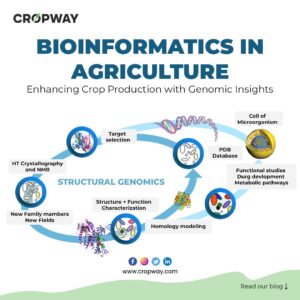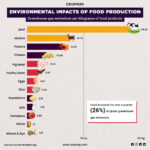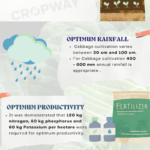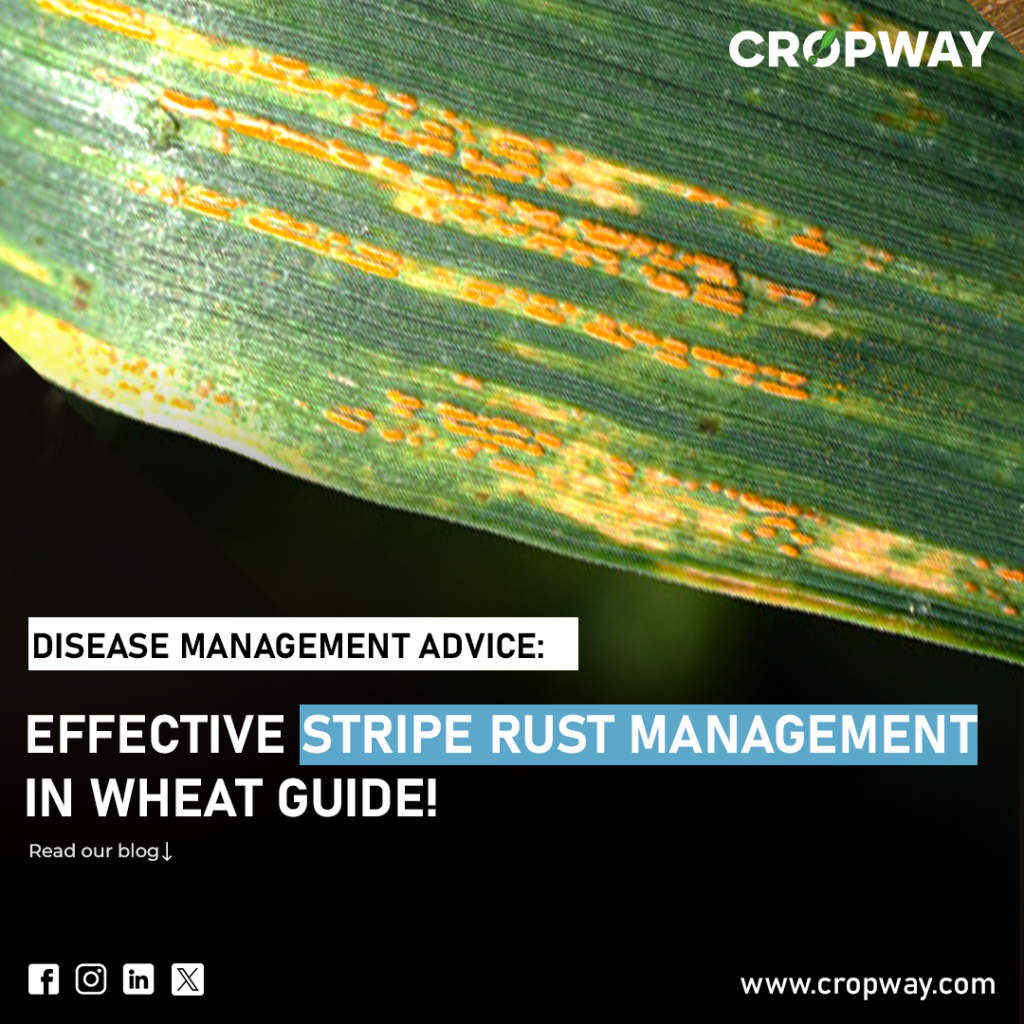
Understanding What is Stripe Rust Disease
Wheat, one of the world’s staple crops, faces a persistent threat from a formidable adversary–stripe rust disease. Stripe rust disease (Puccinia striiformis) is a common and destructive fungal disease that affects wheat crops, causing significant yield losses if not managed properly. Stripe rust, or yellow rust, is a fungal disease caused by Puccinia striiformis f. sp. tritici, significantly impacting global wheat production. Under favorable conditions, it can lead to devastating consequences, causing yield reductions exceeding 70%. Particularly problematic in key wheat production regions such as Punjab, Haryana, J&K, and Uttarakhand in India and widespread in the United States, Canada, and Australia, stripe rust disease poses a substantial threat to wheat crops worldwide.
The disease manifests as yellow stripes on wheat leaves, indicative of its presence, and a disease exacerbated by cold temperatures and intermittent rains in affected regions.
Symptoms and Signs of Stripe Rust
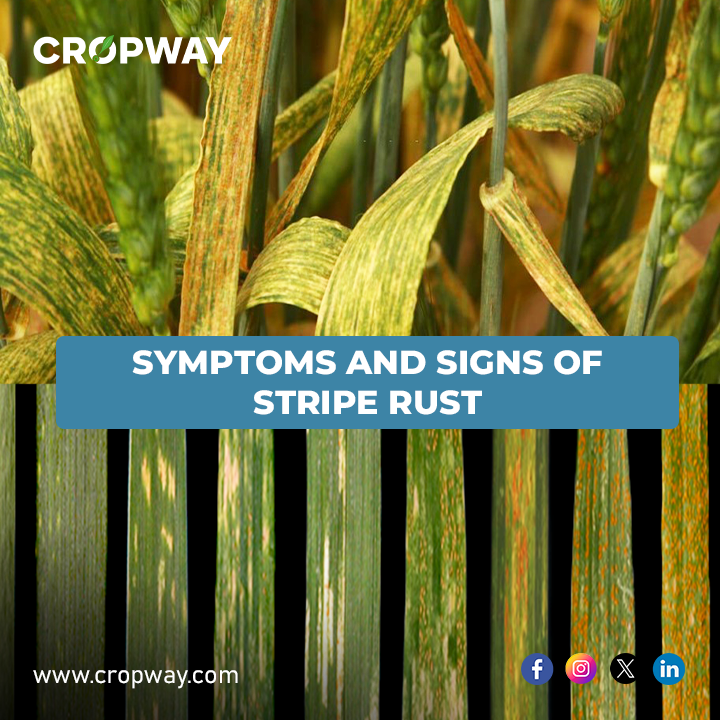
Stripe rust symptoms initially manifest as small chlorotic lesions on leaves, evolving into yellow to light orange pustules (uredia) housing thousands of spores (urediniospores), contributing to the disease’s rapid spread, especially in cool and humid conditions, and posing a threat to wheat crops at various growth stages Pustules form randomly, resembling other rust diseases like leaf rust, posing a challenge for accurate identification.
Teliospores, arranged in long black stripes and are dull black in colour. Under favorable conditions, pustules may appear on glumes and awns. Symptoms exhibit variation based on wheat variety and environmental factors, emphasizing the need for tailored management strategies.
Management Practices
Stripe rust disease poses a threat to grain yield and quality, especially under favorable conditions and with susceptible wheat varieties. The optimal management strategy varies across farms, regions, and seasons. Regardless of the chosen approach, timely implementation is key to effectiveness. Growers must select a strategy aligned with their circumstances and consistently adhere to it throughout the growing season for successful stripe rust disease mitigation.
The following management strategies are recommended to minimize the impact of stripe rust disease:
- To mitigate stripe rust disease, eliminate the ‘green bridge’ by removing volunteer wheat six weeks before sowing.
- Choose resistant varieties over susceptible (S) and Very susceptible (VS) ones.
- Employ seed or fertilizer treatments for early infection suppression.
- Regularly monitor crops and, if necessary, apply a foliar fungicide early in the epidemic for effective control.
Cultural Practices
Adopt cultural practices to reduce stripe rust disease development, such as optimal stripe rust management, which involves selecting resistant wheat varieties, excluding susceptible ones, and avoiding early winter wheat planting. Late planting minimizes infection risk. Additionally, controlling volunteer plants and grasses is vital, as they can harbor stripe rust disease from season to season. Careful irrigation practices, steering clear of excess moisture, hinder rust development. Furthermore, prudent fertilization is essential to prevent overcrowding, which accelerates stripe rust growth. By adhering to these practices, farmers can proactively mitigate the impact of stripe rust, safeguarding their crops and fostering healthier wheat fields.
Chemical Control
While effective fungicides exist for stripe rust control, they should complement, not replace, resistant varieties. Strategic fungicide use becomes crucial in preventing substantial yield loss. Consider factors like variety susceptibility, optimal timing, specific fungicides, disease pressure, prevailing weather conditions, yield potential, and grain prices for judicious application, maximizing the efficacy of fungicides in managing stripe rust.
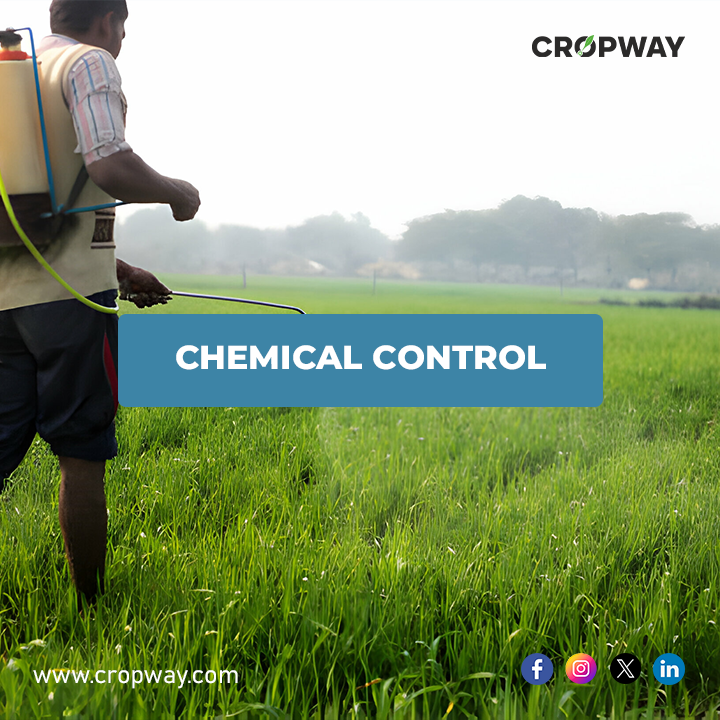
Upon observing yellow rust in wheat, promptly address it by spraying with Spray Zineb at 2.5 kg/ha or Propiconazole 25 EC at a recommended concentration of 0.1% (1 ml/litre). Utilize a power sprayer or tractor-mounted boom sprayers for thorough coverage. A dosage of 0.5 litres per hectare of the fungicide is sufficient to effectively manage yellow rust in the wheat crop.
In cases of early stripe rust development and persistent favorable conditions (low temperature, high moisture), consider multiple applications of fungicides within a single growing season. This proactive approach ensures continued protection against the threat of stripe rust.
Conclusion:
Successful stripe rust management in wheat demands a holistic strategy, integrating cultural practices, resistant varieties, chemical control, and integrated pest management. Farmers, armed with knowledge and proactive measures, fortify their wheat crops, ensuring sustainability and resilience. Timely interventions and ongoing education in farming communities play pivotal roles in effective management. By implementing these strategies, farmers secure their fields, fostering a more robust and productive harvest in the face of the challenges posed by stripe rust.
You might also want to read: Cropway Empowering Small-Scale Farmers: Linking Inputs to Output Markets for Unprecedented Growth


